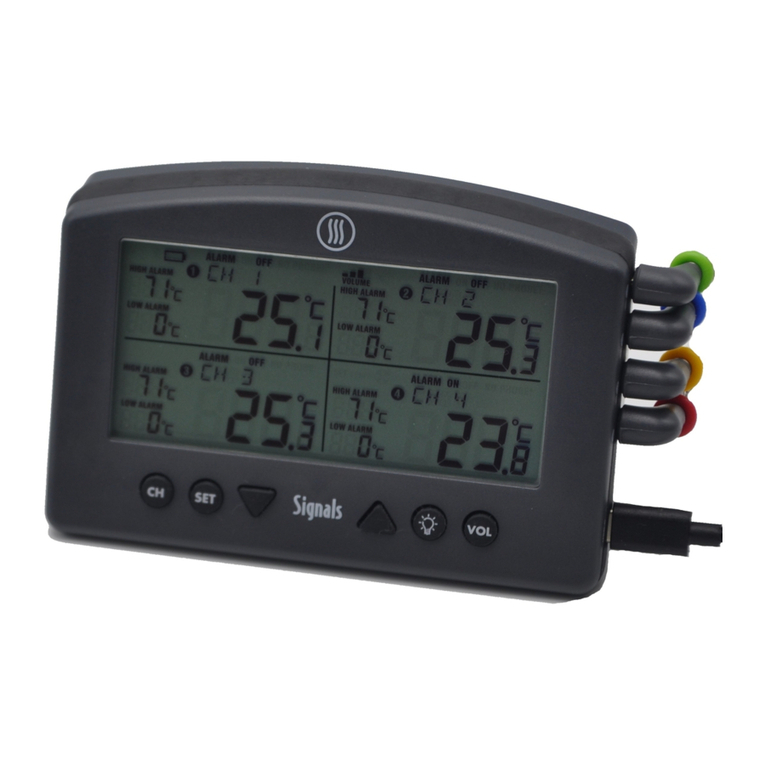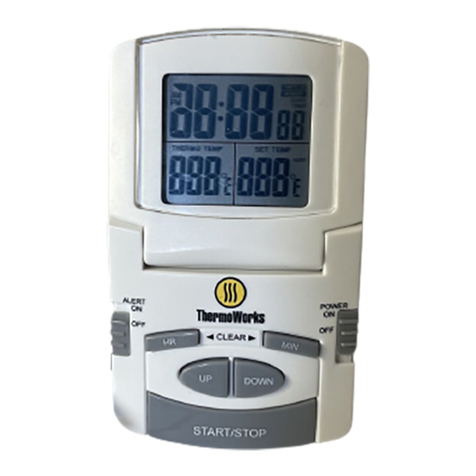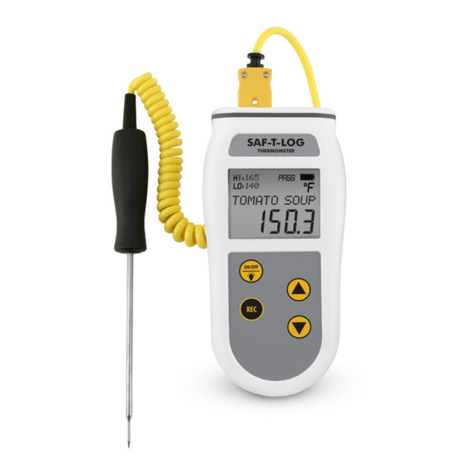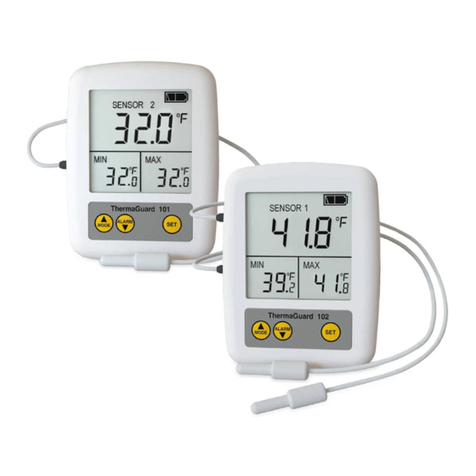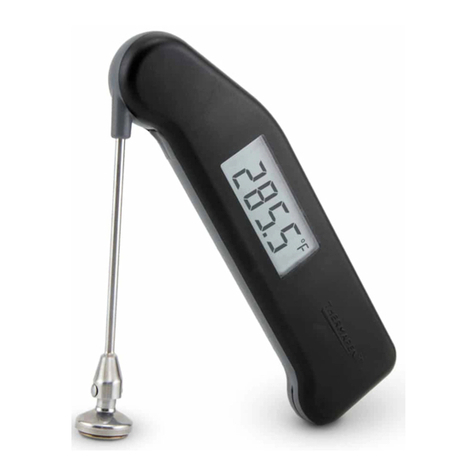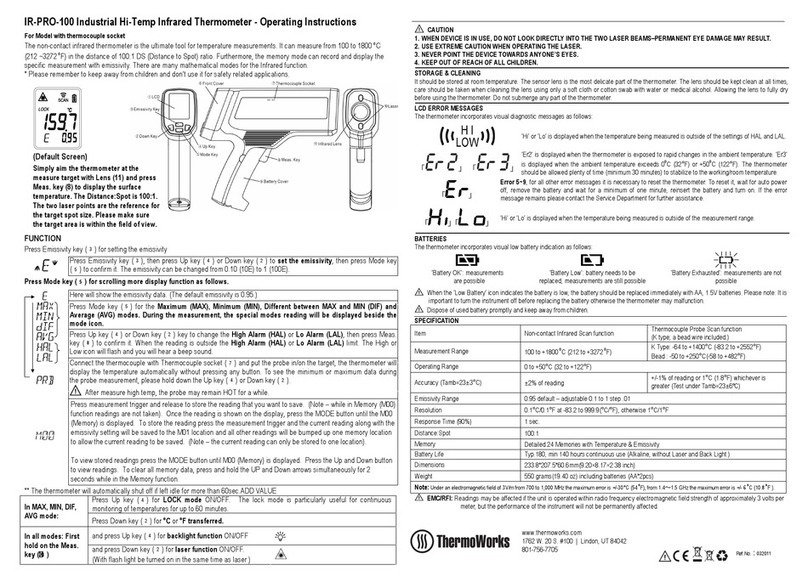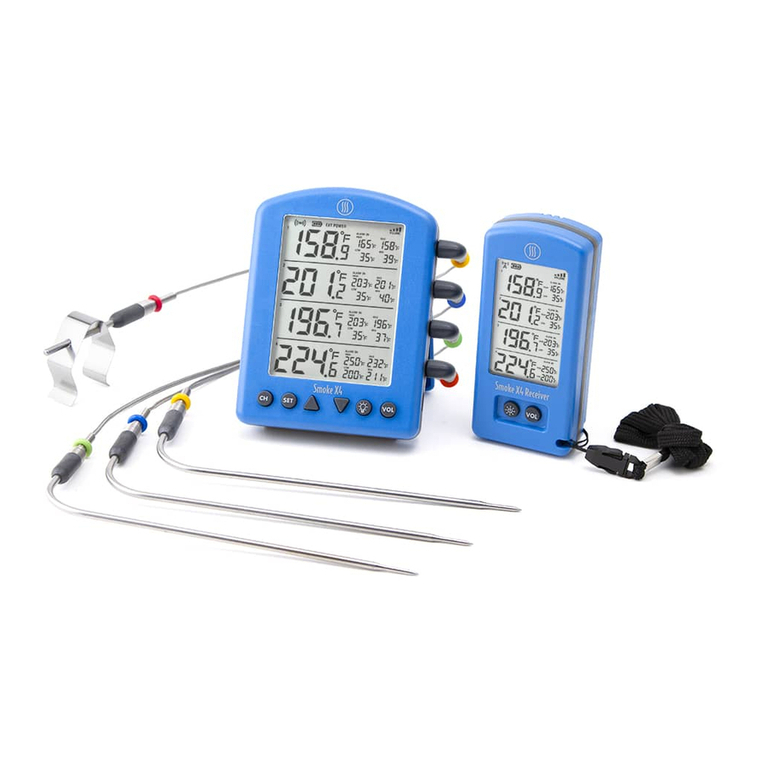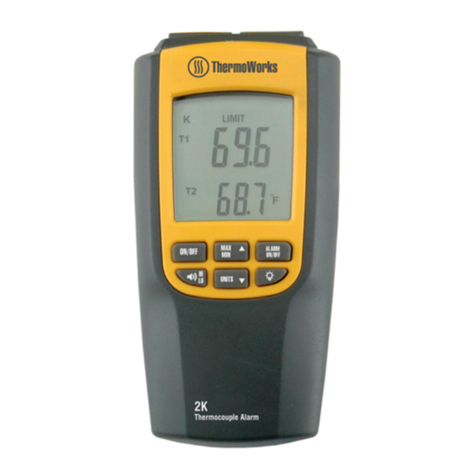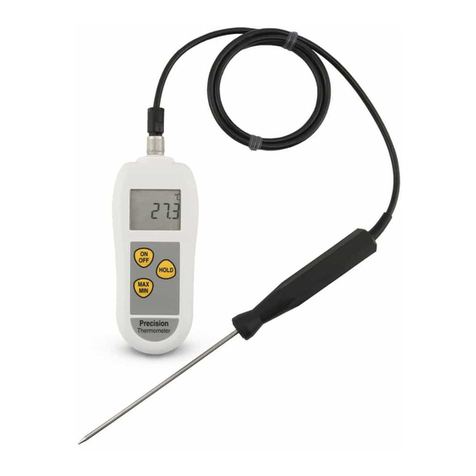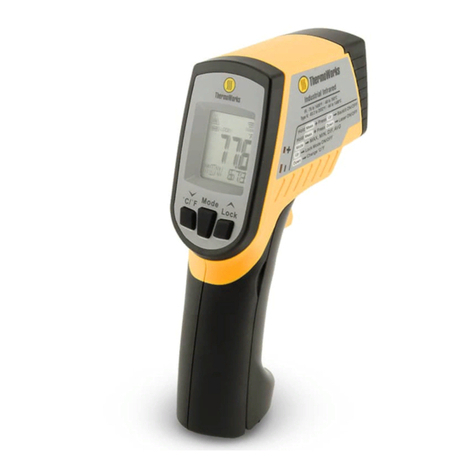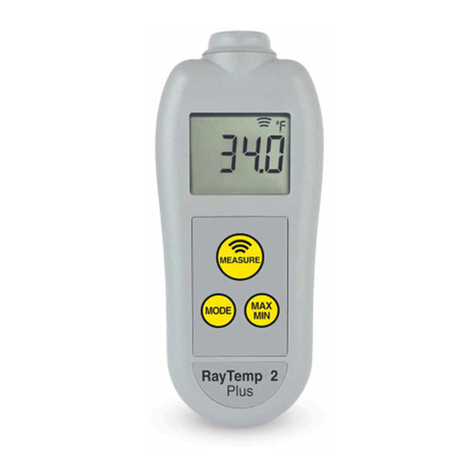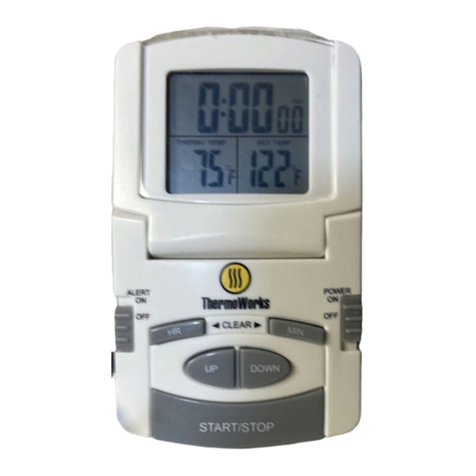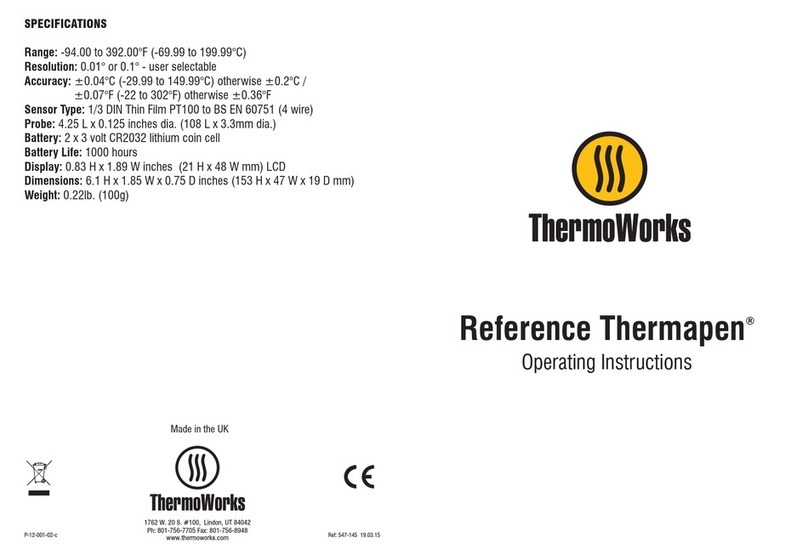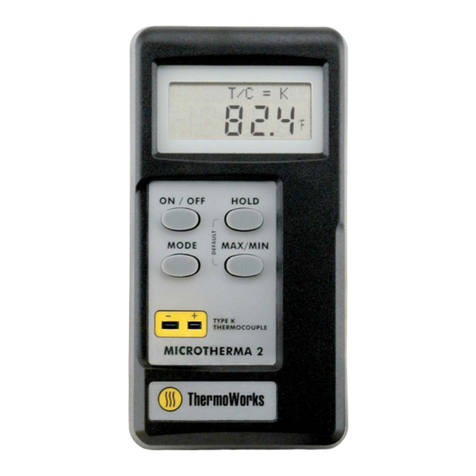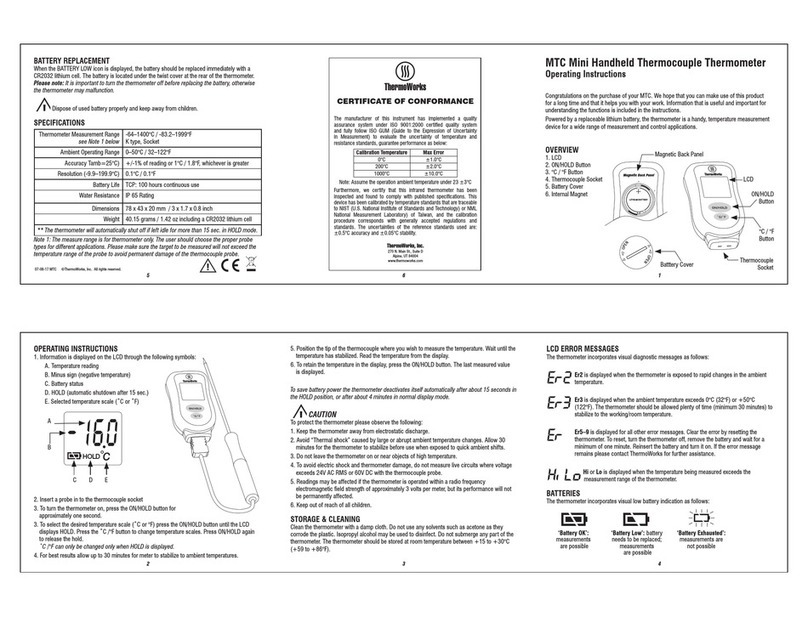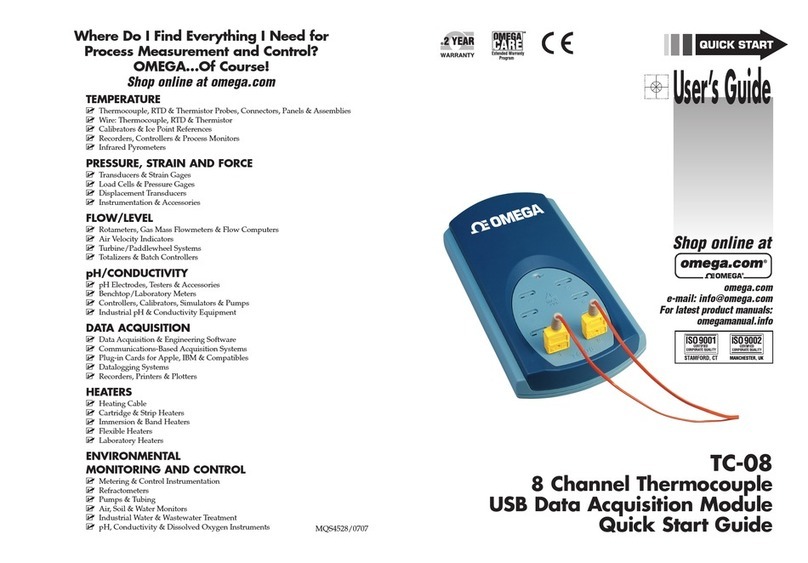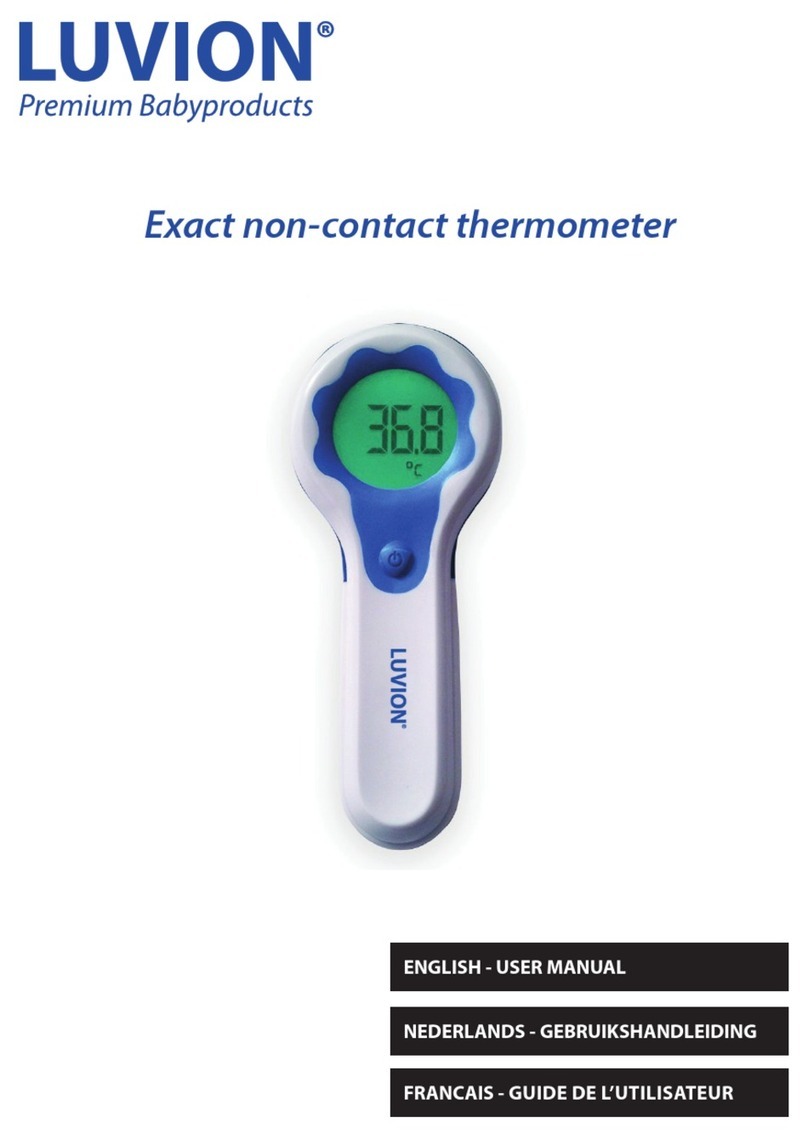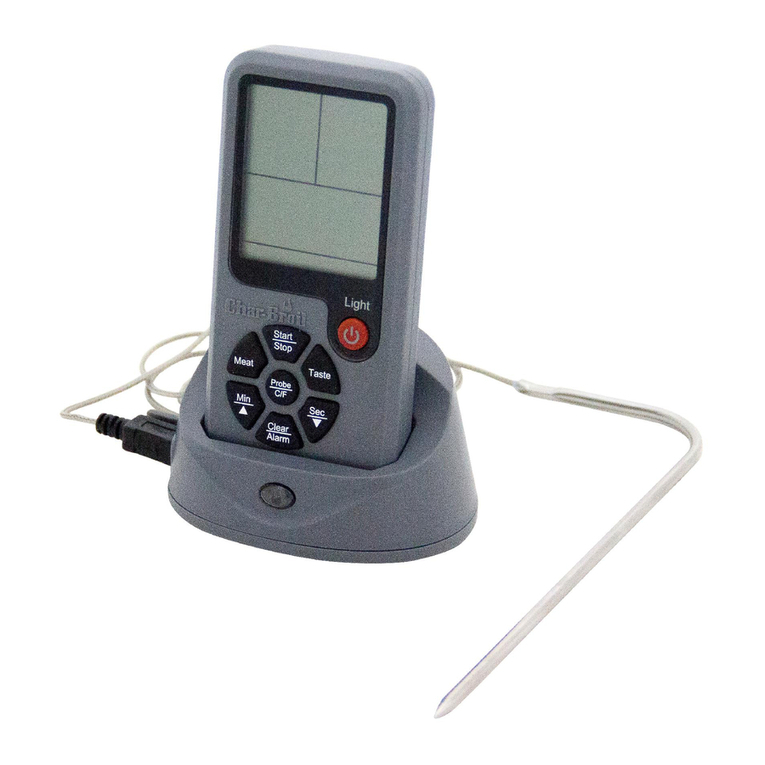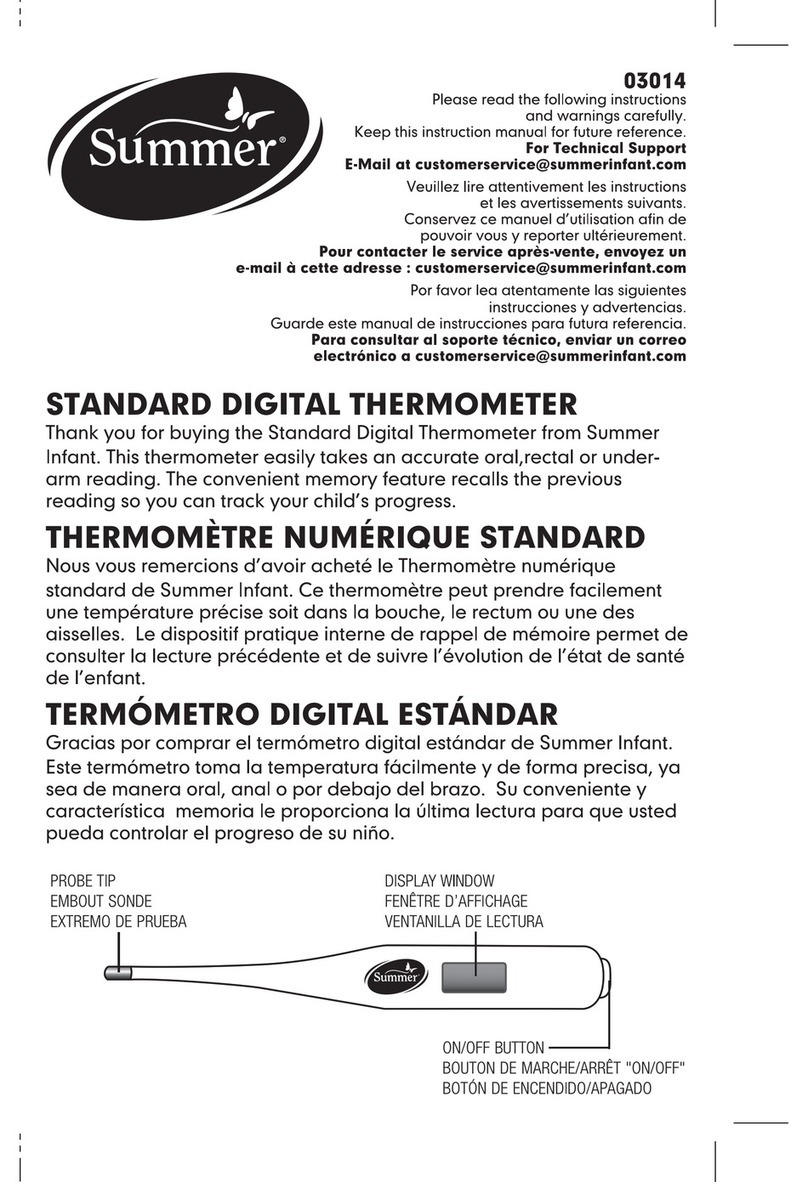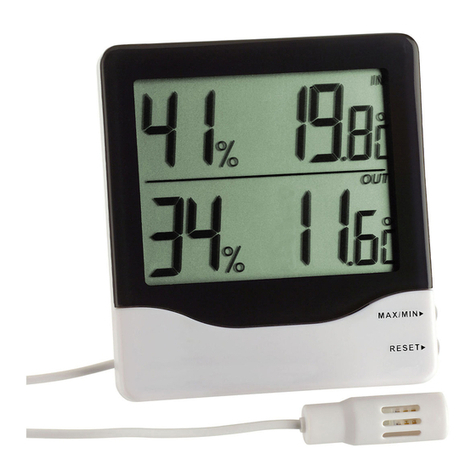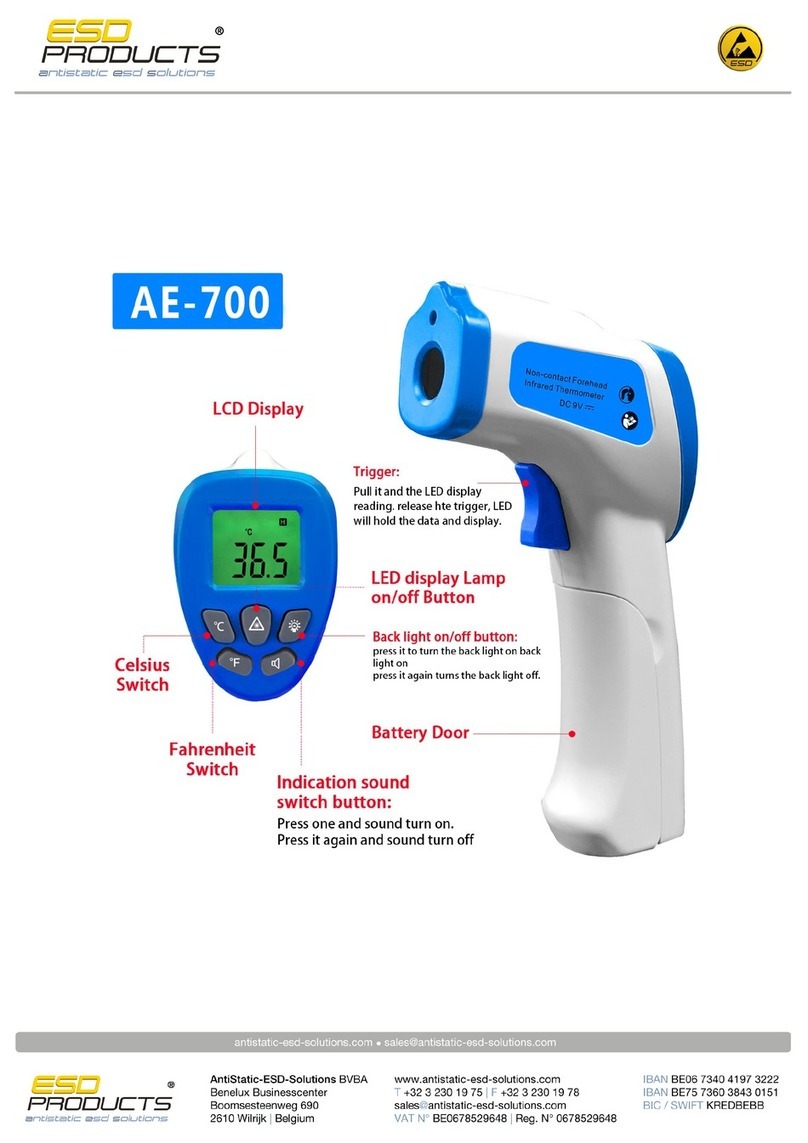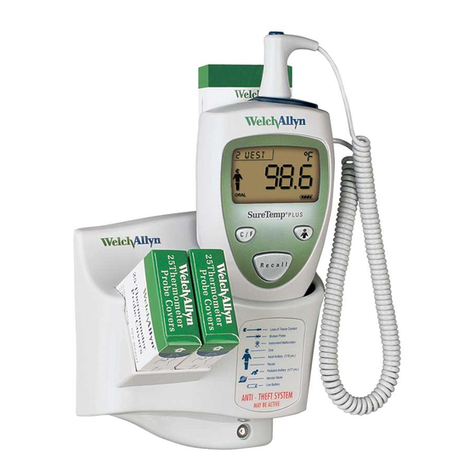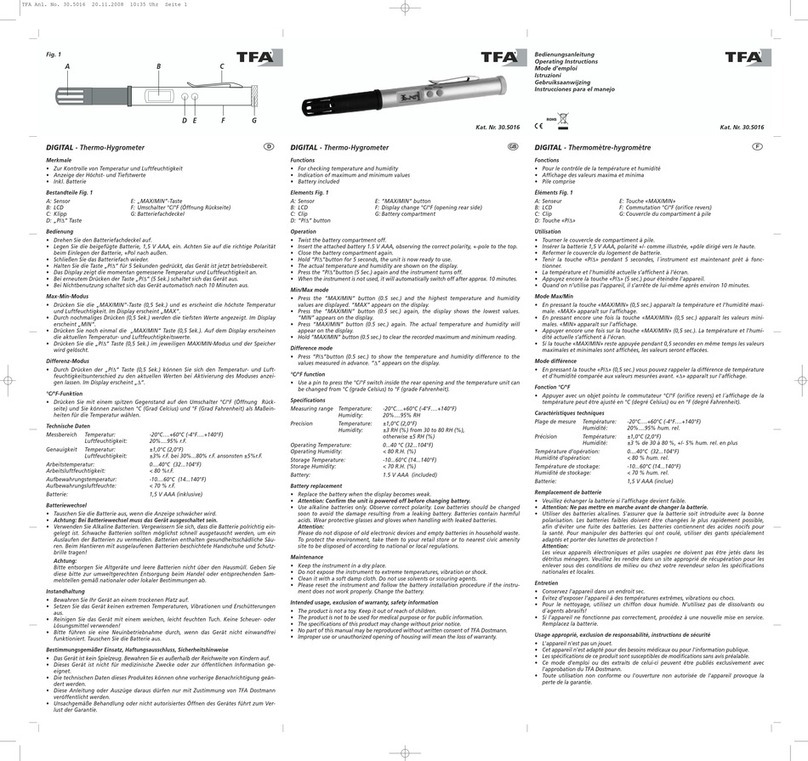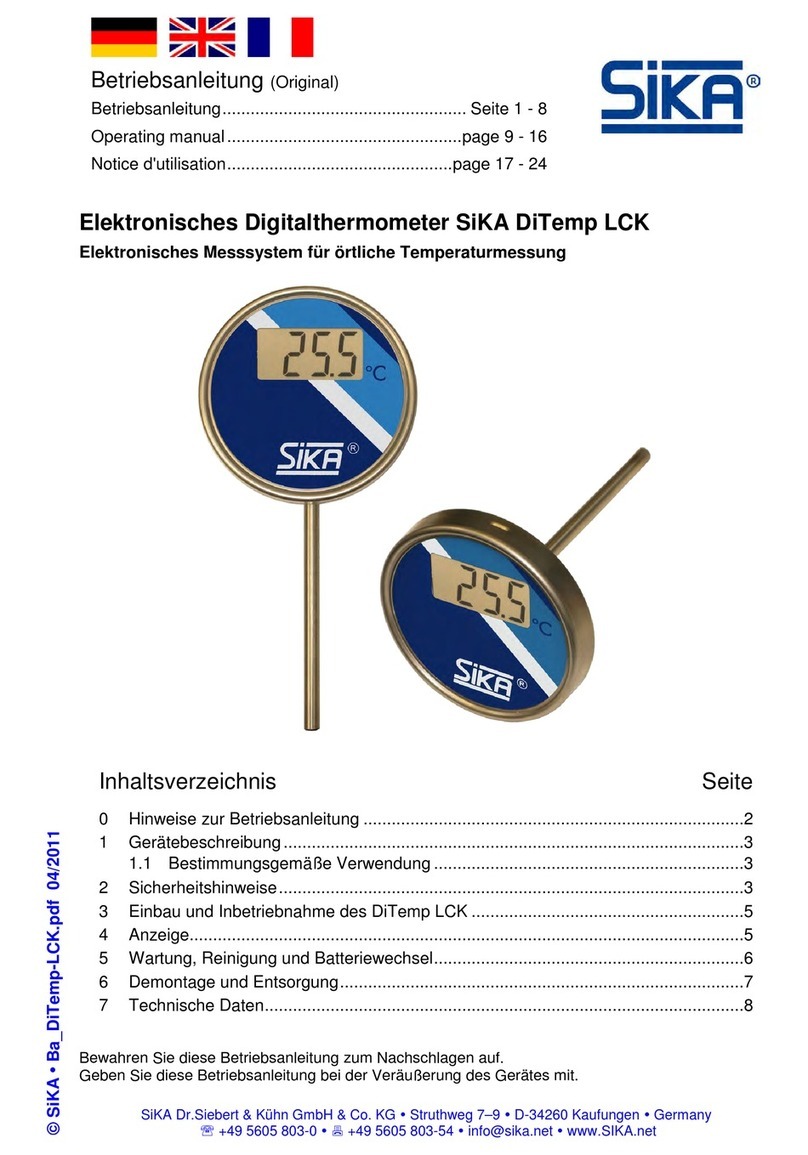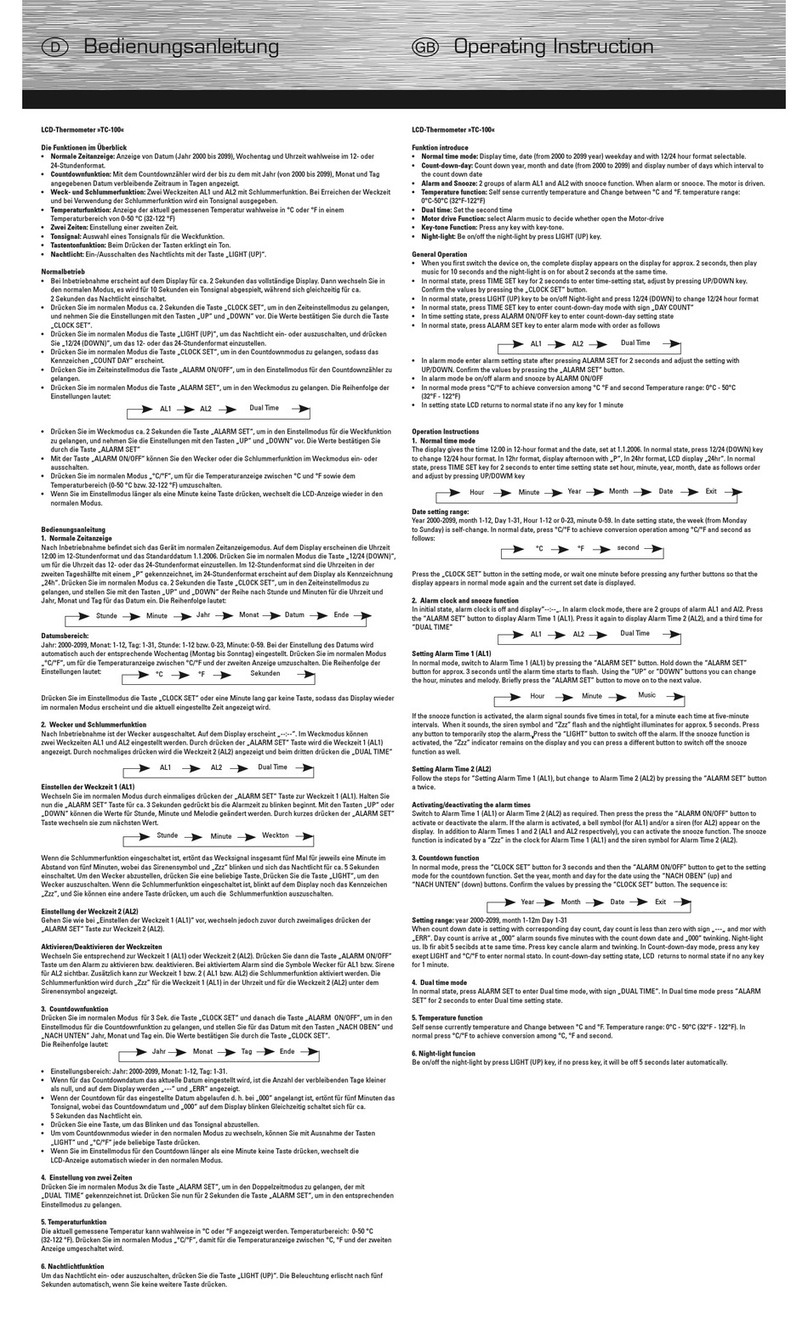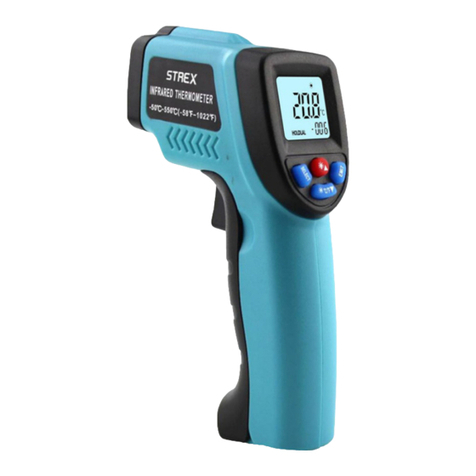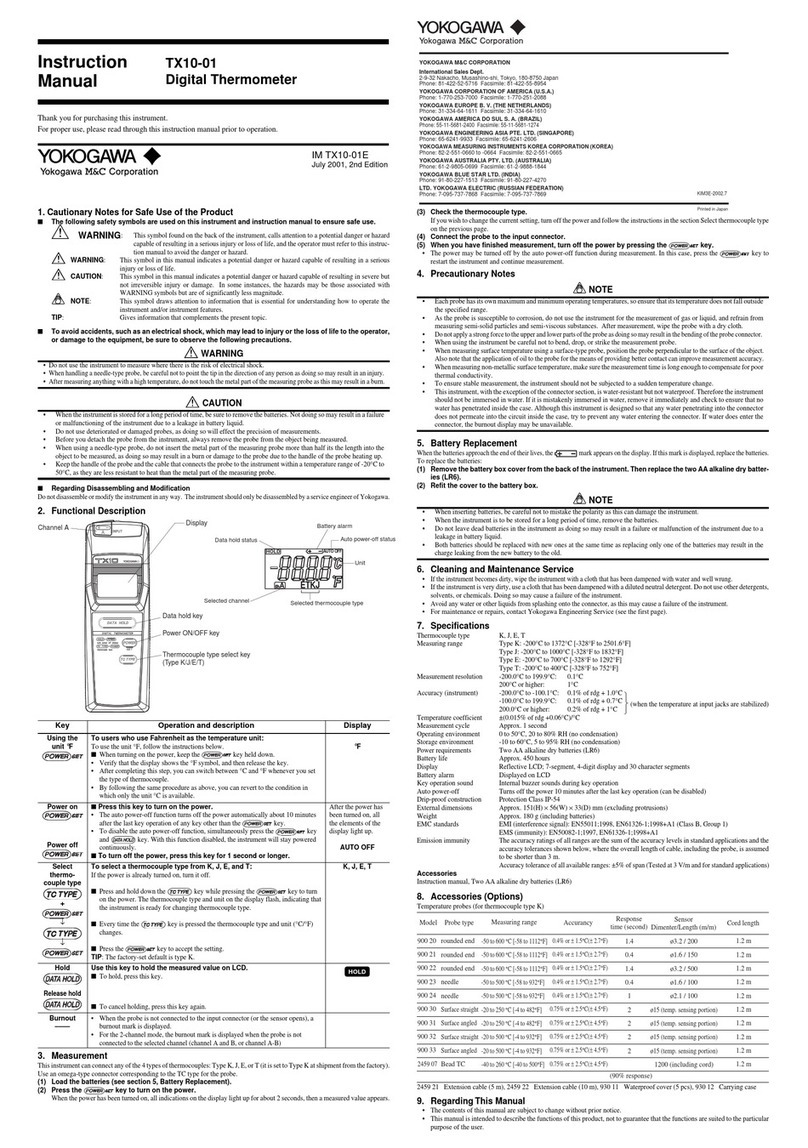
INSTRUMENT OPERATION - Simply press the On/Off
button to turn RayTemp Blue on. Then aim the RayTemp
Blue at the target and press the MEASURE button to
measure the surface temperature. When the button is
released the reading is automatically held and 'HOLD' will
be displayed.
AUTO-OFF - If the instrument is not connected to Bluetooth
within 10 minutes, it will shut down. This function can be
adjusted from devices settings in the app.
MEASUREMENT ZONE/TARGET DISTANCE - The
measurement zone is proportional to the distance the
RayTemp Blue is away from the target. The RayTemp Blue
is equipped with a 5:1 lens. If the target is 5 inches away,
the measurement zone will be 1 inch across.
CONNECTION - Use an iOS or Android device with the app
installed to make connections to the instrument. When
connected, the Bluetooth symbol will show in the
display.
Please note: When not connected, the instrument can still
be used; however, measurements are only taken when the
measurement button is pressed. No readings are stored in
the instrument - they are just indicated on the instrument
display, until the unit is switched off.
EMISSIVITY - The RayTemp Blue is supplied with variable
emissivity from 0.10 to 1.00 (default 0.95). To adjust
emissivity you must be connected to the app and adjust
it in the device settings. For information relating to the
emissivity of specific materials, please visit our website
thermoworks.com/emissivity_table.
Please note: Non-contact infrared thermometers are not
recommended for use in measuring the temperature of
shiny or polished metals.
°C/°F - To change the thermometer between °C and °F, you
must be connected to the app and adjust it in the device
settings. '°C' or '°F' will be displayed in the top right corner
of the LCD when in normal operation.
LCD ERROR MESSAGES - If the ambient temperature
falls below –4°F (-20°C) or exceeds 122°F (50°C), then
either 'Ambient Lo' or 'Ambient Hi' will be displayed. This
will continue until the ambient temperature has returned
to the operating temperature. The thermometer should be
allowed plenty of time (minimum 30 minutes) to stabilize to
the working/room temperature. 'Hi' or 'Lo' will be displayed
when the temperature being measured is outside of the
measurement range.
BATTERY REPLACEMENT - Replace the batteries when the
battery icon ' ' is displayed. This meter will continue to
measure accurately but, after further usage, the meter will
display 'flat bat' and shutdown. Unscrew the battery cover
screw on the back of the meter and replace the three AAA
batteries, ensuring the polarities are correct.
SETTINGS - Adjustable settings via the app include: °F
or °C, measurement interval, auto-off interval, emissivity,
sensor name, and high/low alarm levels. All settings are
stored in the instrument and are downloaded to the app on
connection.
STORAGE & CLEANING - The sensor lens is the most
delicate part of the thermometer and should be kept clean
at all times. Care should be taken when cleaning the lens,
using only a cotton swab dipped in rubbing alcohol. Allow
the lens to fully dry before using it. The thermometer should
be stored between –4 to 140°F (–20 to 60°C).
WARNING
IPA and other solvents may cause damage to the case and
screen of this instrument.
RADIO CERTIFICATIONS
This equipment has been tested and found to comply with the limits for a
Class B digital device, pursuant to part 15 of the FCC Rules. These limits
are designed to provide reasonable protection against harmful interference
in a residential installation. This equipment generates, uses and can radiate
radio frequency energy, and if not installed and used in accordance with
the instructions, may cause harmful interference to radio communications.
However, there is no guarantee that interference will not occur in a particular
installation. If this equipment does cause harmful interference to radio or
television reception, which can be determined by turning the equipment off and
on, the user is encouraged to try to correct the interference by one or more of
the following measures:
• Reorient or relocate the receiving antenna.
• Increase the separation between the equipment and receiver.
• Connect the equipment into an outlet on a circuit different from that to
which the receiver is connected.
• Consult the dealer or an experienced radio/TV technician for help.
This device complies with Industry Canada license-exempt RSS standard(s).
Operation is subject to the following two conditions: (1) this device may not
cause interference, and (2) this device must accept any interference, including
interference that may cause undesired operation of the device.
Le présent appareil est conforme aux CNR d'Industrie Canada applicables
aux appareils radio exempts de licence. L'exploitation est autorisée aux deux
conditions suivantes: (1) l'appareil ne doit pas produire de brouillage, et (2)
l'utilisateur de l'appareil doit accepter tout brouillage radioélectrique subi,
même si le brouillage est susceptible d'en compromettre le fonctionnement.
Under Industry Canada regulations, this radio transmitter may only operate
using an antenna of a type and maximum (or lesser) gain approved for the
transmitter by Industry Canada. To reduce potential radio interference to other
users, the antenna type and its gain should be so chosen that the equivalent
isotropically radiated power (e.i.r.p.) is not more than that necessary for
successful communication.
Conformément à la réglementation d'Industrie Canada, le présent émetteur
radio peut fonctionner avec une antenne d'un type et d'un gain maximal
(ou inférieur) approuvé pour l'émetteur par Industrie Canada. Dans le but
de réduire les risques de brouillage radioélectrique à l'intention des autres
utilisateurs, il faut choisir le type d'antenne et son gain de sorte que la
puissance isotrope rayonnée équivalente (p.i.r.e.) ne dépasse pas l'intensité
nécessaire à l'établissement d'une communication satisfaisante.

